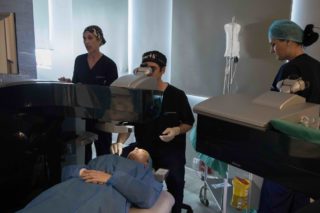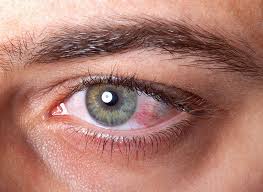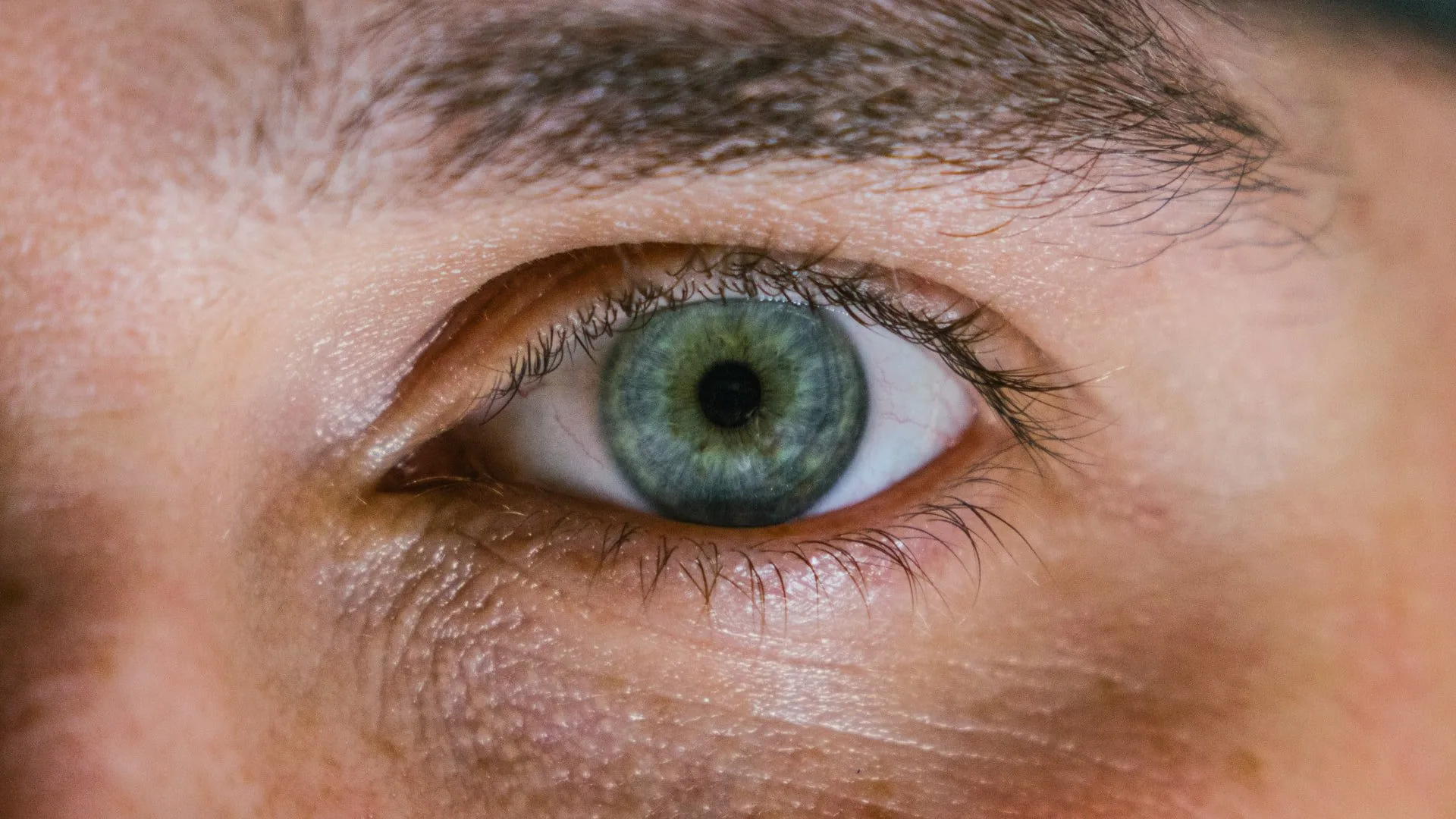Laser vision correction is becoming increasingly popular. There’s a good reason. The technology offers freedom from spectacles and contact lenses. Consultant Ophthalmic Surgeon Dr Dylan Joseph explains why laser vision correction over a lifetime is nine times safer than wearing contact lenses and in the long run more cost effective than wearing varifocal spectacles.
Treating short-sightedness and astigmatism
The diagnostic equipment utilised today in ophthalmology is so advanced that it can visualise the cells on the surface of the eye to an accuracy of one-thousandth of a millimetre. The technology can treat short-sightedness, far-sightedness and astigmatism or a combination of problems, potentially leaving patients free from spectacles, contact lenses and reading glasses.
Laser vision correction is arguably the most rapidly expanding sub-speciality in ophthalmology
We have come a long way since the first laser treatment was done 30 years ago. Everything has become refined, pushing towards better outcomes. Lowering risk and complication rates as much as possible. Laser vision correction is in fact the most published, researched and peer reviewed surgical discipline across the board. It’s very safe!

Why do we need to know about it?
Because it’s a very safe, repeatable, alternative to visual aids including spectacles, contact lenses and even reading spectacle. Many people are unaware of their choices. Understanding and trusting the technology and your chosen laser vision correction specialist, goes a long way in helping you make that decision to own your vision.
Who should consider laser vision correction?
Guy Kezirian, head of the Refractive Surgery Alliance made a statement a few years ago at our national ophthalmology Conference: “We are all born with the right to vision-when we come of age visually, (this is as early as 18 years old), we need to help people understand their options and lead them on a path of empowerment, allowing them to take control of owning their vision.’
There are many refractive errors, from short-sightedness, far-sightedness, to astigmatism, or a combination of these that can be lasered. Even the 40 plus folk, who’s arms are now too short and require reading glasses. They now have options to free themselves from the readers.
Freedom from contact lenses and spectacles
If laser is occasionally not an option, we have other avenues of vision correction to explore, including an implantable ‘contact lens’ inside the eye. A further alternative is what we call a refractive lens exchange-replacing the human lens with technology that gives you the ability to read, see the computer, and see in the distance.
In essence, anyone wearing a spectacle, contact lens or reading spectacle and wanting to explore independence from them or reduce their dependence can consider this.

How does laser vision correction surgery work?
The first laser system uses plasma, essentially air bubbles, to create an ultra-thin flap in your cornea. This is so accurate it can be set to a depth of 100 microns, 0.1 mm!! The flap is so accurately constructed, after surgery it sits very neatly back in its place. The laser that creates this flap is called a femtosecond laser, the first of the lasers in the refractive suite.
The second laser, which delivers pulses to reshape your cornea, is called an excimer laser, which stands for excited dimer. It delivers pulses in a flying spot pattern at 500 Hz or 500 pulses per second. This is all pre-programmed by the surgeon according to the vision which has been tested, as well as scans of the contour of the patient’s eye, to get an optimised, smooth surface after surgery.
This is what we refer to as customised vision correction. The suite offers a variety of customizable options.
Who cannot have the procedure?
Looking at big data, in about 92%-95% of people seeking visual solutions, there are options available. Some people may have systemic problems, or other issues with their eyes which refractive surgery cannot correct. This will be picked up during consultation and initial examination and discussed in detail.
What risks are associated with laser vision correction?
Firstly, the pros are incredible. You just need to speak to someone who has undergone this life changing surgery to understand this. From sportsmen and women who no longer struggle to see underwater, or sweat dripping into their eyes and displacing a contact lens whilst doing a mountain bike marathon or a trail run, to the airline pilot who can now see his console and the runway. Even to the short-sighted person who’s first reaction every day on waking is to reach for the side-table, to put some specs on because everything was otherwise a blur. The list goes on.
Potential Complications
When we evaluate a person we run through the entire list of potential complications and risks, which can differ from person to person according to their history and script that they wear. Let’s look at a few of those:

Dry Eyes
Interestingly, this is a misnomer with current laser platforms. The term we use today is transient ocular discomfort. It is always transient as a result of lasers, but can persist for up to 9 months. This is treatable, but because of modern femtosecond lasers’ ability to create ultra-thin flaps, this risk is very low.
It is also imperative as part of the pre-operative screening process that dry eyes are picked up on. They need to be treated prior to laser vision correction, or any vision correction procedure for that matter. Most people with existing dry eyes have meibomian gland dysfunction, or dysfunction of the oil glands, critical in coating the tear film, preventing it from evaporation and subsequent inflammation. The biggest causes of this meibomian gland dysfunction are 5-8 hours per day in front of a computer and contact lens wear.
My biggest reason for not lasering patients when they come to see me is because of pre-existing dry eyes.But it doesn’t mean they can’t have laser. The dry eye just needs to be treated and optimized prior to laser.
Glare, halos and double vision
Glare and halos are incredibly rare nowadays because of modern laser profiling. Double vision is even more rare, and in most cases can be rectified.
Regression and natural aging
This is all discussed with the patient before surgery. Due to optimising nomograms and controlling surgical technique and time of surgery, the potential for over and under-corrections is as low as we can get it.
These terms however don’t equate to regression, which means that you may need a touch up laser in the future. The higher your script, the greater the chance of needing an enhancement or touch up. And yes, this can be done.
If your vision does change again, be it 2 or 10 years down the line, there is usually something we can do to get it back to where you want it. Needing a touch up does not mean the laser has failed, which is another common misconception. There are many reasons for regression including natural aging of the eye, and remodelling of the surface of the eye as part of the recovery process.

Astigmatism
It’s commonly believed that astigmatism cannot be lasered. Most modern lasers can laser up to 6 diopters of astigmatism!
Astigmatism after surgery is incredibly rare because of the ability of the lasers to track and control the rotational movement of your eye whilst lasering.
Flap problems
Flap complications are incredibly rare too. The beauty of creating a flap with air is that if in a very rare event there is something we are not happy with, we send you home and bring you back after three months. It is just air, no blades. It dissolves and has zero impact on your vision. So here, with femto-second laser technology, the dictum ‘prevention is better than cure’ holds true.
Loss of vision
Laser surgeons are now able to track their outcomes and constantly optimise them. We always look critically at cases where there are lines of visual loss. Most of this is due to transient ocular discomfort, which does heal over time. Very rarely will one see a permanent loss of best corrected vision. In most of these cases, depending on the cause, vision can again be lasered, and vision restored.
How long does the procedure take and how long will the results show?
Kansas city lasik surgery takes about 20 minutes for both eyes. Prior to the surgery, we will give you a calming tablet and talk you through the procedure from start to finish. During the procedure we will talk to you to ensure you know exactly what is happening.
Usually if you have had LASIK, you can see a great visual improvement the next day, and usually by 4-6 days most people are seeing the same, if not better than what they did with their contact lenses or glasses. Surface treatments, or PRK takes longer to heal visually. We do this treatment in cases where we cannot create a flap.
What is this technology?
The technology used is called LASIK. This is an acronym for Laser in situ Keratomileusis. It’s the art of combining science and the most sophisticated laser tracking systems to essentially ’sculpt’ the cornea, or clear covering on the front of your eye. This is completely painless. Lasik surgery is all about a pattern, a metronome from start to finish, including how you work a patient up for surgery. How you input your data into the nomograms which will tell you how to program the laser for the individual. Here it is imperative to understand your system and optimise your outcomes.
It’s a cool laser system. So contrary to belief, it does not burn tissue. It’s so advanced that it tracks your eye in so many dimensions. You could read a book whilst the laser is working and each pulse is delivered accurately… and that’s 500 pulses per second. Each is tracked twice prior to delivery. Yes that’s 1000 times per second the laser pulses are tracked.
Does refractive surgery technology differ and does this impact the end result?
Absolutely! As mentioned earlier, not only does the ability to track and deliver sequential pulses make the treatment more accurate, but the laser beam technology and pattern delivery has changed so much over the years. Older laser systems were blamed for glare and halos, especially at night. This is all but a thing of the past with the expansion of the treatment area that we laser. Also, the ability of the laser to simulate a more natural corneal profile during the laser decreases glare and halos. The refractive suite is so smart, it contours your cornea according to what it was like before the laser. It’s all programmed with thousands of data points it takes into account.
What other advancements do you foresee that will help people enhance their eyesight?
As touched on, there is amazing technology that can treat scripts of up to -20, which is outside the FDA guidelines for laser vision correction. Here we are able to implant a ‘contact lens’ over your human lens inside your eye-this is done asleep and the results are usually immediate.
The same technology can be used in people who have a high plus script. For those that cannot have laser vision correction or ‘implantable contact lens’ correction, we can consider a refractive lens exchange. This involves removing the human lens and replacing it with technology that simulates your specs or contact lenses.
What is really exciting is that there is technology in the pipeline that changes your iris color-this is a laser – and so far preliminary studies are showing very promising results.
About Dr. Dylan Joseph

Dr. Dylan Joseph is a consultant ophthalmic surgeon who qualified from the University of Bloemfontein in South Africa, cum laude, winning the prestigious Dean’s medal. He also completed his post-graduate degree at the College of Surgeons of South Africa and is registered as a specialist ophthalmic surgeon with the Irish Medical Council and the General Medical Council in Britain.
Dr Joseph has been fellowship trained in refractive, lens and cataract surgery at a world-leading clinic in Dublin, Ireland with Mr Arthur Cummings.
He was involved in the first clinical trials in the world for the Streamlight laser vision correction procedure. The trials were presented to the world at the European Society of Cataract and Refractive Surgeons in 2018. In his refractive suite, which is situated in the Advanced Surgical Centre in Knysna, South Africa, Dr Joseph uses among the safest, most efficient and advanced technologies to treat his patients.



![women [longevity live]](https://longevitylive.com/wp-content/uploads/2020/01/photo-of-women-walking-down-the-street-1116984-100x100.jpg)










